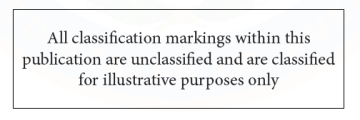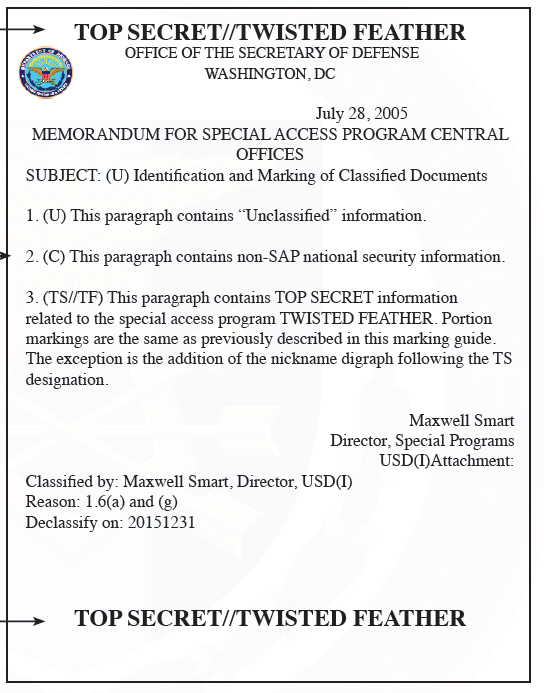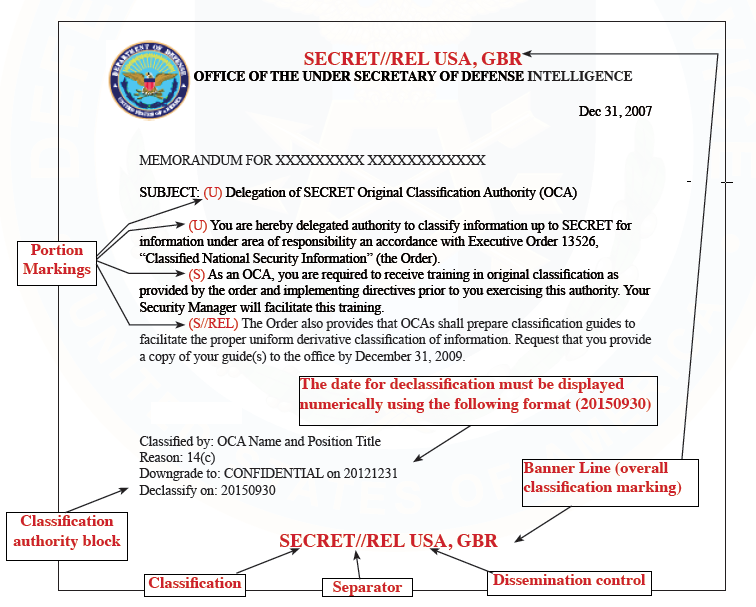Secret documents are important to the U.S. military. That’s why the Pentagon has just issued a 43-page guide called Marking Classified Information.
Sure, some people, including the director of national intelligence, argue that the government classifies too many things. But if they’re going to be classified, they need to be classified properly. That’s where this how-to guide comes in.
You know it’s serious when its cover notes:
Sure, you’re probably familiar with the rankings, ranging from CONFIDENTIAL to WikiLeaks-level SECRET to even more secret TOP SECRET.
It also details the rarified atmosphere of Special Access Programs (“created only when absolutely necessary to protect the Nation’s most sensitive and critical information”) and their accompanying “code words” and “nicknames” that restricts access to them to specifically-cleared individuals.
It includes a handy-dandy cheat sheet for confused classifiers:
…as well as “unclassified examples…for illustrative use only”:
(Hmm…it would explains a lot if the Under Secretary of Defense for Intelligence’s director of special programs were Maxwell Smart.)
There’s even a mention of the lowly FOR OFFICIAL USE ONLY, which doesn’t mean much, according to the reams of it seen by Battleland (kind of like “award-winning” — it simply means you’ve been a reporter in Washington for awhile). FOUO material isn’t classified. “FOUO shall not appear in the overall classification banner because the classification adequately protects the unclassified information,” the guide explains, “except when page markings are used to reflect the classification of information on that page instead of the overall document classification.”
But just where do those words like SECRET go? It’s complicated enough on paper, and the guide goes into great detail over what goes where. It also explains how rolled documents, photographs, emails, work papers, DVDs, sound recordings and other media should be branded.
And there’s a lot more than just words like TOP SECRET. Here’s an example from the guide, if you want to drop some of the lingo into casual conversation:
The guide is from the Center for Development of Security Excellence, which is part of the Defense Security Service, which “supports national security and the warfighter through our security oversight and education missions.”






